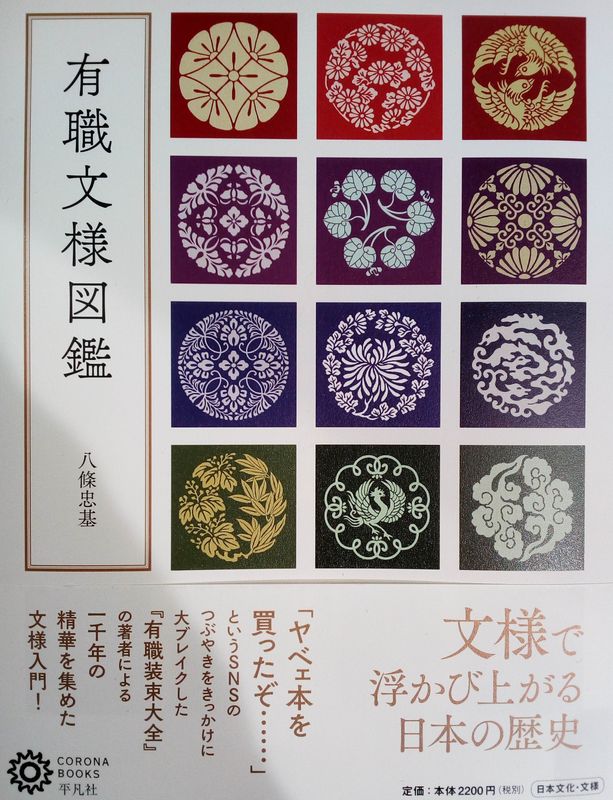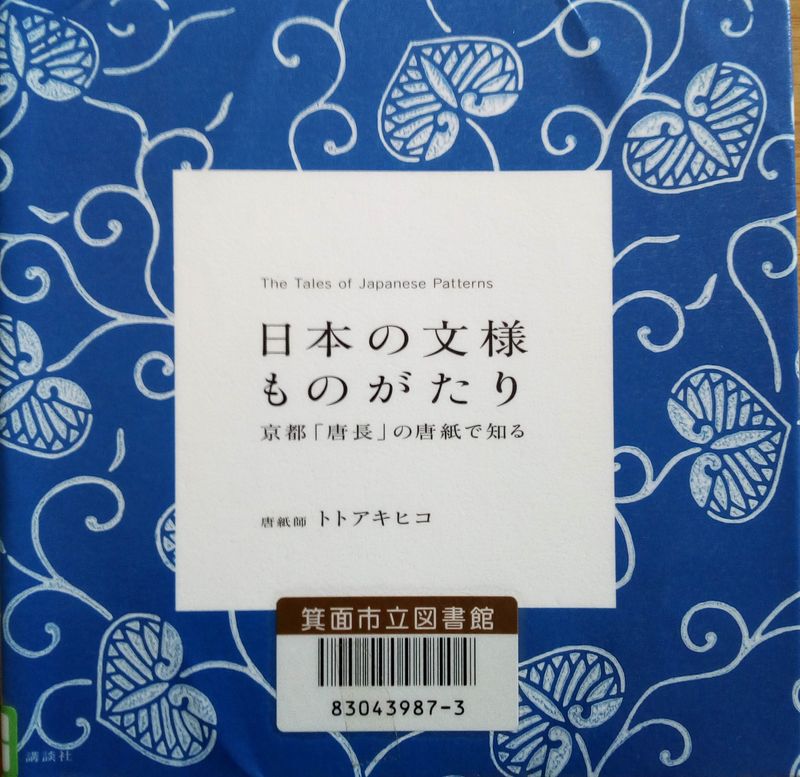Apr 16, 2021
Traditional Motifs or Emblems
Exploring Japanese patterns via a couple books on the subject.
In a bookstore I was browsing the design section and found this book on the traditional emblems used on fabrics, industrial design, ceramics, etc. across Japan.

The title of the book: 有職文様図鑑 (ゆうしょくもんようずかん)
As a fan of design and Japanese culture, I was really interested in the pictures in the book, but not as much trying to read and comprehend all of it in Japanese. The local library doesn't seem to have it, but there is related information online in Japanese. I like that the book goes into detail about the origins of each style of crest used in Japan, ie. what it originally depicted.
These are traditional crests or emblems, generally used by noble families or monks. They can be called examples of the past.
The ones in the book are more decorative but the word monyou can include family crests, called kamon.
Those are also really interesting as another Japanese culture rabbit hole to get lost in. As an example, if the crest shows an image of wisteria flowers, it is likely historically related to the Fujiwara family.
A bunch of examples can be seen at this link.
There is also an overlapping study of patterns used for kimono and their meanings. Apparently in a traditional wedding, men wear montsuki, or formal clothing with their family crest. My husband doesn't even know what his family's crest is.
Years ago I met a college student who was a self-admitted “kimono nerd,” but it doesn't seem popular for young people to have any knowledge about what pattern of kimono is appropriate.
Over ancient Mesopotamia and Egypt, (old orient) the paintings and images, like those of Pharaohs and Buddha etc. included pattern-like details, for example on clothing worn by people in the images. From these, we can see that the emblems and patterns existed at least 1500 years ago and how they have changed over time.
The patterns originally depicted nature – flowers and leaves, water and rain, clouds, and those inspired by animal patterns like feathers, turtle shells and fish scales.
A long time ago, these could have been used to share information about daily life and teach what plants were food as opposed to not. Maybe they specified the local area the person wearing the pattern came from, like Ainu kimono did.
They may have just been decorative.
Some of the crests are obvious motifs, like butterflies around a flower.
Usually circular shapes are repeated in a polka dot-like pattern, simply called maru.
In another style, these circles overlap to make a more full pattern, for example shippou, or connected hexagons, like kikkou, which is a turtle shell type of pattern.
There are also diamond shaped patterns, known as hishi.
The checkerboard patterns, like Tanjirou wears in Demon Slayer, is called ichimatsu.
To me, the pattern looks like it was originally a close up of two contrasting colors, tightly woven together.
Grass type shapes are seen more in industrial design. These running patterns are used as inspiration for fabric design and gates.
The interesting thing is that the designs in Japanese crests are not so different from patterns seen over Europe and Asia. More unique patterns are found originating from Africa and the Americas, because they were not included in the Silk Road years ago.
Japan's crests are unique in the plants and animals commonly found here, but some plants, plus clouds and water patterns are fairly universal.
I found a related book in the library, this one with limited English translations. It's more focused on the beautiful motifs made from wood carvings and printed onto fabrics or paper, maybe even for mokuhanga (woodblock prints).

This one is called “The Tales of Japanese Patterns” (日本の文様ものがたり), by Akihiko Toto.
Something stood out to me from the preface.
Motifs are originally related to kanji, or the first Chinese phonetic symbols. I know kanji is based on an image or simplified drawing, which evolved over time. But kanji evolved representing a sound and a more literal visual representation evolved into a design motif.
Both initially had a kind of force or energy in them, according to the author, based on Chinese literary teachings. A quote by one scholar, Shizuka Shirakawa, says, “Chinese script contains the power of incantation.”
As a nerd about both kanji and design, this connected the two in my mind. Maybe what I'm attracted to is this “power of incantation,” which admittedly sounds kind of weird.
The book divides the type of motifs into four sections: botanical, from natural phenomena, animals, and geometric.
What I really like about it is that each motif has photo examples, the name of the motif and it's meaning, and a detailed part about where that meaning comes from.
I was happy to learn that momiji (the name I gave my new red bike when moving to Minoh) has the meaning of longevity and transition or transformation.
The emblems and woodblock printed motifs are beautiful and full of history. It's a history that goes outside of Japan and even Asia.
The first book has images that seem more representative of graphic or industrial design, while the second book is more similar to arts and crafts. They are both creatively inspiring.



0 Comments